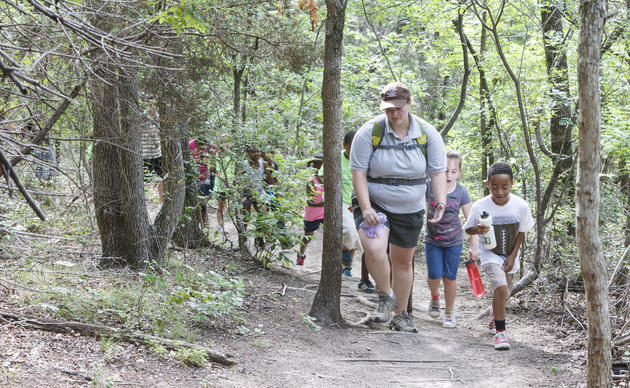In 1999, on an exploratory hike, amateur naturalist David Hurt discovered a stand of flowering dogwoods (Cornus florida)--a rare and remarkable find, as the flowering dogwood is common to the Pineywoods and post oak belts of East Texas, but is generally absent from shallow clay soils of limestone regions to the West. This was the first of many rare flora and fauna discoveries in the Canyon.
White trout-lily, also called white dog-tooth violet (Erythronium albidum), is a showy spring-blooming forest wildflower that ranges from South Dakota, Ontario and New York south to Georgia and Texas. The population at Dogwood Canyon may be among the largest in this southwestern limit of its range.
Dogwood Canyon also provides the right habitat to support three species of Hexalectris orchids, which are native to the escarpment habitat. Students and faculty from the University of Dallas are studying the ecology and abundance of these unusual flowers. The rare orchids bloom through the summer, and are among only a few hundred in the county. These orchids rely on a relationship with fungi for their nutrition, and grow only in areas with the specific soil types such as those found in the canyon.
Only the oldest Ashe junipers, with their loose, peeling bark, suit the Golden-cheeked Warbler (GCWA) as the right place to build their nests. The ancient junipers in the canyon provide protection and freedom from disturbance that these endangered birds, need to rebuild their fragile population. Although the GCWA has not been seen or heard in this canyon for several years, the oak and ash trees found here provide favorite warbler food (soft-bodied caterpillars), making Dogwood Canyon a prime location for their return someday to this habitat. The GCWA is an endemic species to Texas as Texas is the only place this bird will build nests to raise their young.
How you can help, right now
See Our Upcoming Events
We offer summer camp, kayaking programs, birding classes, guided hikes, and more.
Career Opportunities at Audubon
Come join our staff and help us carry out our efforts to conserve and restore natural ecosystems to benefit both humanity and the earth’s biological diversity!



